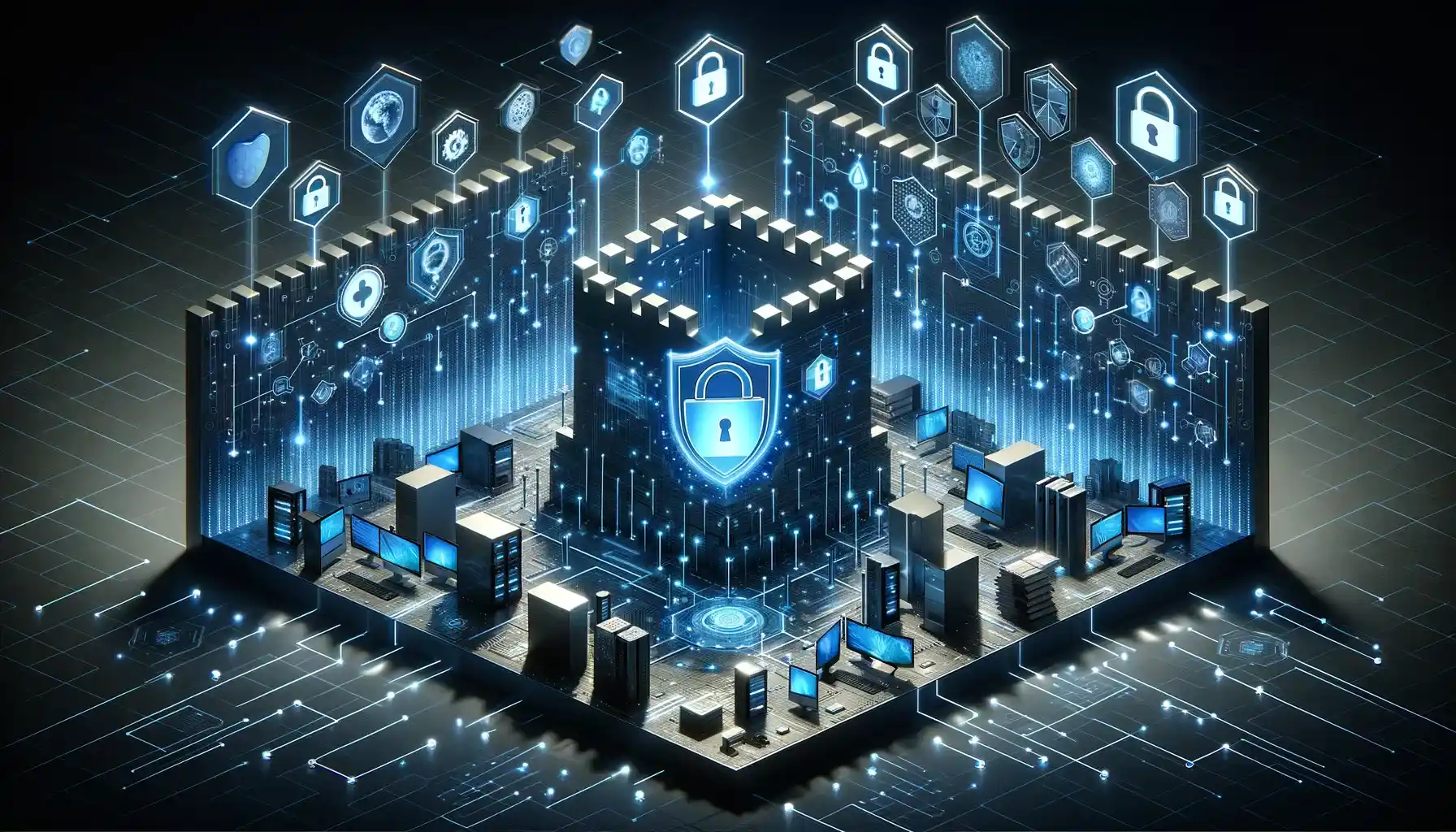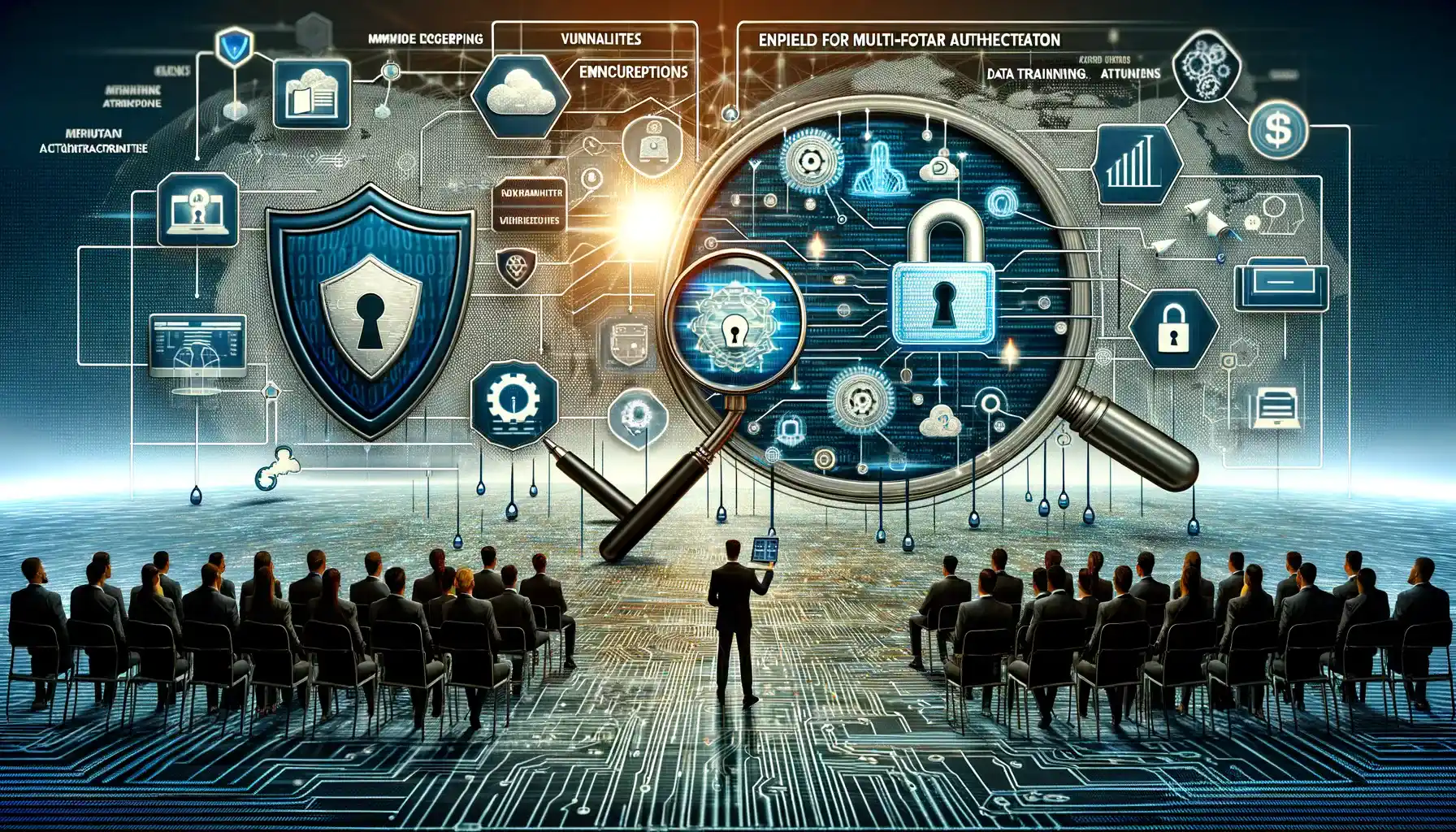Table of Contents
In today’s digital landscape, cybersecurity in enterprise software stands as a paramount concern. With the increasing sophistication of cyber threats, businesses must implement robust strategies to safeguard their software infrastructure. Here, we delve into five essential strategies for ensuring the resilience of enterprise software against cyber threats.

What is Cybersecurity in Enterprise Software?
Cybersecurity in enterprise software refers to the measures and practices put in place to protect an organization’s sensitive data, systems, and networks from cyber threats and attacks. Enterprise software encompasses a wide range of applications and systems used by businesses to manage various operations, such as customer relationship management (CRM), enterprise resource planning (ERP), human resources management (HRM), and more.
What are the 5 strategies for ensuring Cybersecurity in Enterprise Software?
1. Implement Multi-Factor Authentication (MFA)
Cybersecurity in enterprise software is paramount for safeguarding sensitive data and mitigating potential threats. One foundational step towards fortifying this security framework is the implementation of multi-factor authentication (MFA).
MFA introduces an additional layer of defense by requiring users to provide multiple forms of verification, such as passwords, biometric scans, or token-based authentication, before accessing enterprise software systems. This extra step significantly reduces the risk of unauthorized access and data breaches, enhancing the organization’s overall security posture.
For instance, a prominent financial institution bolstered its cybersecurity measures by deploying MFA across its enterprise software platforms. This proactive approach resulted in a noticeable decrease in security incidents, demonstrating the efficacy of MFA in thwarting potential threats.
Moreover, the adoption of MFA instilled greater confidence among users, reinforcing trust in the institution’s commitment to protecting sensitive financial information. As organizations increasingly recognize the importance of cybersecurity consulting services in enterprise software, integrating robust authentication mechanisms like MFA becomes imperative to safeguard against evolving cyber threats.
2. Regular Security Audits and Updates
Cybersecurity in Enterprise Software involves maintaining a proactive stance towards safeguarding sensitive data and systems from cyber threats. One essential aspect of this proactive approach is conducting regular security audits to identify vulnerabilities and risks within enterprise software solutions. These audits help organizations pinpoint potential weak points in their systems, allowing for prompt mitigation measures to be implemented.
Additionally, staying current with software updates is crucial in ensuring the security of enterprise software. This proactive stance aligns with the principle of continuous threat exposure management (CTEM), where organizations constantly assess and address potential vulnerabilities. By promptly applying patches and updates, organizations can address known security flaws and minimize the likelihood of exploitation by cyber attackers. This proactive stance towards software maintenance reduces the window of opportunity for malicious actors to exploit vulnerabilities, thereby enhancing the overall cybersecurity posture.

For instance, a global tech conglomerate demonstrated the effectiveness of proactive cybersecurity measures by conducting quarterly security audits across all its enterprise software solutions. This proactive approach enabled the company to detect and rectify vulnerabilities before they could be exploited, mitigating potential security threats and safeguarding its valuable assets and data.
By consistently prioritizing security through audits and software updates, an organization can significantly reduce its exposure to cyber risks and better protect its digital assets.
3. Data Encryption and Access Controls
Cybersecurity in Enterprise Software encompasses various strategies to safeguard sensitive information and critical systems from cyber threats. Data encryption plays a pivotal role in this defense, particularly concerning sensitive data. Encrypting data both at rest, when stored, and in transit, when transmitted between systems, adds a layer of protection against unauthorized access, significantly reducing the risk of exposure in case of a breach.
Furthermore, stringent access controls are essential to restrict access to specific data or functionalities within enterprise software. By implementing access controls, organizations can ensure that only authorized individuals have the necessary permissions to interact with sensitive information, ensuring insider fraud prevention and mitigating the risk of unauthorized access.
For instance, a healthcare organization bolstered the security of its patient records by deploying end-to-end encryption within its enterprise software systems. This measure not only safeguarded patient privacy but also ensured compliance with regulatory standards such as HIPAA, which mandate the protection of sensitive healthcare data.
This example underscores the critical role of encryption and access controls in enhancing cybersecurity within enterprise software, particularly in highly regulated industries where protecting sensitive information is paramount.
4. Employee Training and Awareness Programs
Cybersecurity in enterprise software is paramount in safeguarding sensitive data and systems from malicious actors. However, human error remains a significant vulnerability, often exploited through tactics like phishing and social engineering. Recognizing this, investing in employee training and awareness programs is crucial.
Additionally, pursuing industry-recognized certifications like those offered by CompTIA can significantly enhance these training efforts. Thankfully, there are CompTIA Certification Dumps that equip employees with the latest cybersecurity knowledge and best practices. This ensures they are well-prepared to tackle emerging threats.
By educating employees about common cyber threats within the context of enterprise software environments, organizations empower their workforce to recognize and respond effectively to potential security risks.
For instance, a manufacturing company bolstered its cybersecurity measures by implementing regular cybersecurity awareness workshops for employees. These workshops specifically addressed threats prevalent in enterprise software environments, such as phishing attacks targeting sensitive data stored in ERP systems or malware infiltrating production management software.
As a result, employees became more vigilant and proactive in identifying potential threats, thereby contributing to the organization’s overall cybersecurity posture.

Furthermore, integrating cybersecurity training into the onboarding process for new employees ensures that all staff members are equipped with the knowledge and skills needed to navigate enterprise software securely. By fostering a culture of security awareness, organizations can significantly reduce the likelihood of successful cyber attacks and mitigate potential risks associated with human error in enterprise software environments.
5. Continuous Monitoring and Incident Response
Cybersecurity in enterprise software involves implementing comprehensive strategies and tools to safeguard critical data and systems from cyber threats. Despite robust preventive measures, the ever-evolving threat landscape means that security incidents can still occur.
Therefore, organizations must adopt continuous monitoring and incident response protocols to detect and mitigate breaches promptly. Real-time monitoring allows for the identification of suspicious activities or anomalies within enterprise software systems, enabling immediate action to contain and remediate potential threats.
For instance, a government agency invested in establishing a dedicated Security Operations Center (SOC) to monitor its enterprise software infrastructure around the clock. This proactive approach empowered the agency to swiftly detect and respond to cybersecurity incidents, minimizing the impact on its operations and data assets.
By continuously monitoring their enterprise software systems, organizations can stay vigilant against emerging threats and maintain a strong defense posture in the face of evolving cyber risks.
Fortifying Enterprise Software: A Proactive Approach to Cybersecurity
Cybersecurity in Enterprise Software is not just a reactive defense mechanism but a proactive strategy crucial for safeguarding valuable assets and ensuring uninterrupted business operations. It encompasses a multifaceted approach, incorporating robust data protection measures, stringent network security protocols, and comprehensive identity and access management systems.
Moreover, proactive vulnerability management and continuous security monitoring are essential elements to detect and mitigate potential threats before they escalate into significant breaches.
By integrating cybersecurity into every aspect of software development and deployment, organizations can effectively mitigate risks and fortify their digital infrastructure against evolving cyber threats. Implementing these strategies enables enterprises to maintain business continuity, preserve the confidentiality, integrity, and availability of critical data, and uphold trust with customers and stakeholders.
With cybersecurity ingrained in the fabric of enterprise software, organizations can navigate the complexities of an interconnected world with confidence, resilience, and readiness to confront emerging cyber challenges head-on.